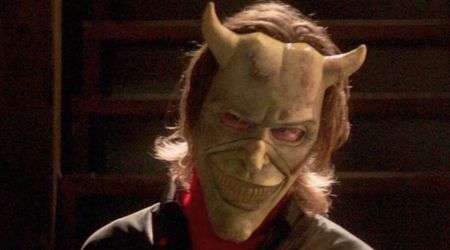'Secrets of the Saqqara Tomb': A site of canine mass murder? How 8 million dog mummies shocked archeologists

The pyramids of Egypt have long been a source of fascination for historians, archaeologists and tourists alike as the tombs of Ancient Egypt still harbor many secrets of how life once was in the ancient kingdom. Over time, there is a lot that has been uncovered about the lives of pharaohs and how they lived, but much of it is still a mystery. A new Netflix documentary, 'Secrets of the Saqqara Tomb', is set to unearth some of the mysteries in one of the oldest tombs found in the country.
However, the burial grounds at Saqqara hold a dark secret. Catacombs at Saqqara were found to contain millions of mummified animals -- mostly dogs -- next to a sacred temple for Anubis. Anubis was a jackal-headed ancient Egyptian god of mummification and the afterlife. A study by researchers at Cardiff University found that many of the mummified dogs were quite young, suggesting the existence of breeding centers around the necropolis. The study also highlights the “significant economic role” played by animal cults like that of Anubis in ancient times.
Other animals whose mummies were found include jackals, foxes, falcons, cats and mongoose. Researchers believe the animals may have been seen as interchangeable, but that doesn’t diminish their importance. The researchers believe that ancient Egyptians worshipping animal deities may have been a statement of national identity when Egypt was invaded by other nations.
Many of the dogs were only hours or days old when they were mummified. Some older dogs had more elaborate burials and may have lived at the temple, but the younger pups were likely bred for the cult. It's likely that these young pups were separated from their mothers and died from dehydration or starvation.
The catacombs were first documented in the 19th century; however, they were never fully excavated. In 1897, the French Egyptologist Jacques De Morgan published a map of the necropolis of Saqqara, which included a plan for the dog catacombs, but no information about the date or circumstances of their discovery. While De Morgan's map was available, drifting sand and an earthquake in 1992 have made the smaller of the two catacombs indicated inaccessible. The catacombs were likely built in the fourth century BC and were made out of stone from the Lower Eocene (about 56 million to 48 million years ago).
According to archaeologist and Egyptologist Salima Ikram, a professor at the American University in Cairo, who spoke to NPR, animal mummification was done in ancient Egypt "to allow beloved pets to go on to the afterlife, to provide food in the afterlife, to act as offerings to a particular god and because some were seen as physical manifestations of specific gods that the Egyptians worshipped."
She also agreed that a large number of animal mummies signified the presence of puppy mills in ancient Egypt. "You don't get 8 million mummies without having puppy farms," she told NPR. "And some of these dogs were killed deliberately so that they could be offered. So for us, that seems really heartless. But for the Egyptians, they felt that the dogs were going straight up to join the eternal pack with Anubis. And so they were going off to a better thing."
'Secrets of the Saqqara Tomb' will be available to stream on Netflix on Wednesday, October 28, at 12 am PST.










